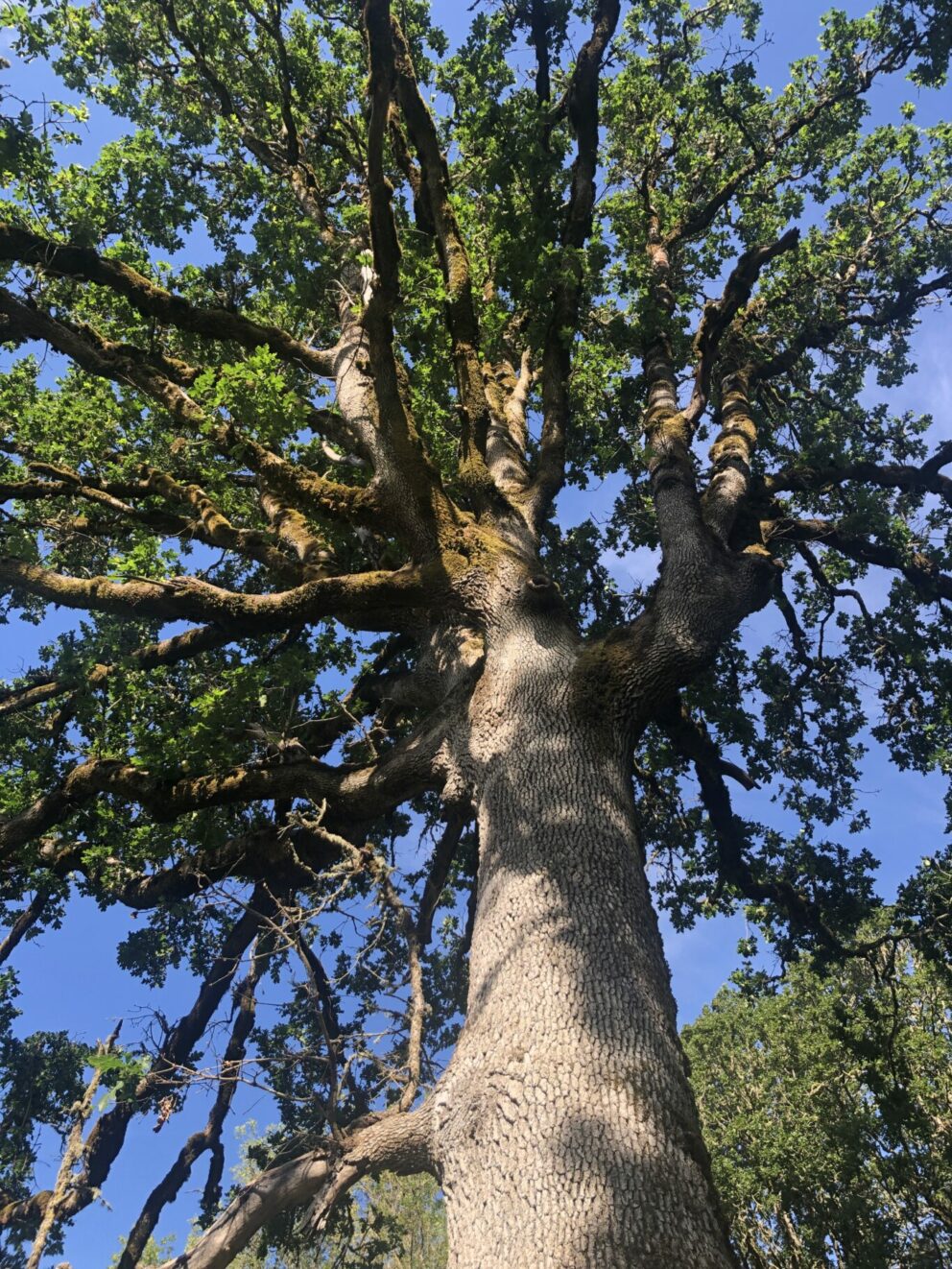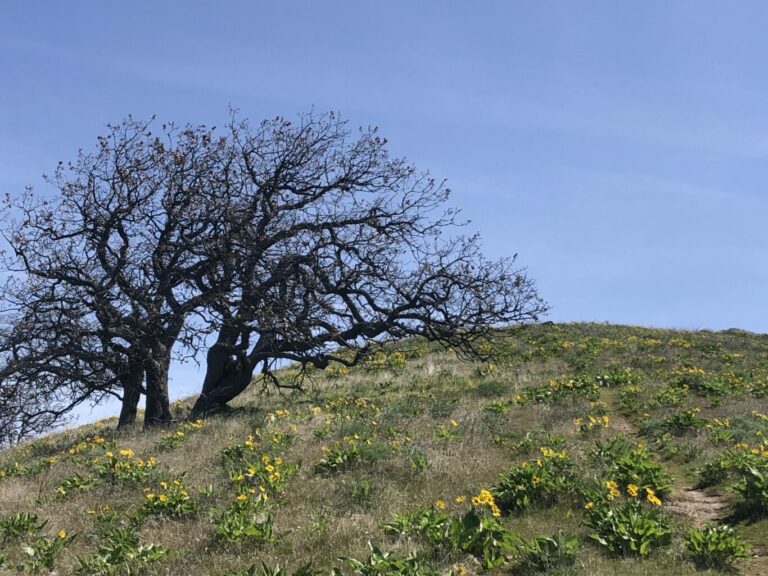Planting for a climate ready future? In the Pacific Northwest, we are already experiencing summers with higher temperatures, reduced snow pack and less rain, and our winters are as wet as ever. Oregon white oak grows well in areas that are very wet in the winter and hot and dry in the summer. Oak savannas are also more fire-adapted than fir forests.
The Willamette Valley’s First Nations worked with fire to ensure that faster growing conifers did not shade out Oregon oaks, supporting an abundance of acorns throughout the valley. Today only about 5% of oak savanna remains in the Valley, and there is a growing effort to restore oaks.
Oaks support an incredible diversity of species. In fact, oaks may be the most widely adapted and coveted food source by wildlife than any other tree on the planet. Over 200 species from caterpillars to bears use Oregon oak as a food source. With a lifespan of 500-900 years they also sequester carbon longer and stand as habitat trees for generations.
If you have an open patch with full-sun, dry summers and wet winters consider planting an oak, or a tiny oak forest with madrone and black hawthorne trees. Learn to ‘oakscape’ or plant, tend, and landscape for plants that thrive under oaks.

What makes oaks a particularly valuable tool in our our fight against climate change is their relationship with mycorrhizal fungi: mycorrhizae make copious amounts of carbon-rich glomalin, a highly stable glycoprotein that gives soil much of its structure and dark color. Oak mycorrhizae deposit glomalin into the soil surrounding oak roots throughout the life of the tree. Every pound of glomalin produced by oak mycorrhizae is a pound of carbon no longer warming the atmosphere, and glomalin remains in soil for hundreds, if not thousands, of years. These factors rank oaks among our best options for scrubbing carbon from the atmosphere and storing it safely in soil throughout the world’s temperate zones. – Douglas Tallamy, The Nature of Oaks
This workshop is in design mode – stay tuned!
WORKSHOP DETAILS:
Group size: 5-25
Location: Online via Zoom
Ability: Requires a computer with working audio and video.
Duration: 1 hour
Price: Free
Community agreements: Kindergarten rules apply in shared spaces. Please bring your whole self – giggles, tears and all – but you will be dismissed or sent to quiet time if the potential for harm to others arises. We value restorative practices including relationship, respect, responsibility, repair, and reintegration for both our human and plant communities. Reading Nature welcomes marginalized parts of ourselves including LBGTQIA+, neurodivergent and BIPOC identities.

